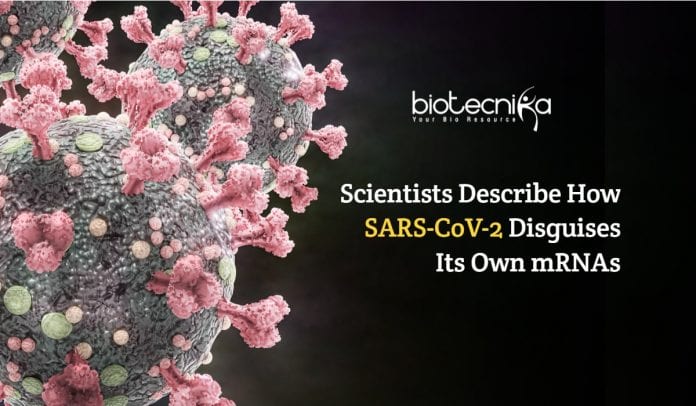SARS-CoV-2 Disguises Its Own mRNAs Using a Cap-Modifying Enzyme
The mRNAs expressed by SARS-CoV-2, without too much difficulty, can pass as human mRNAs as the viral mRNAs just have to modify the cap they wear in order to pass as human mRNAs. This helps the viral mRNAs in not being identified by the innate immune system though it may seem like a modest costume change.
The cap-modifying proteins encoded by SARS-CoV-2 are being studied by the scientists based at UT Health San Antonio in hopes of one day preventing the costume change and realizing a new therapeutic strategy against COVID-19.
Led by Yogesh K. Gupta, Ph.D., assistant professor of biochemistry and structural biology, the scientists recently described how the nonstructural proteins nsp16 and nsp10, the two cap-modifying proteins, manage to disguise viral mRNA.
After a complex is formed by nsp16 and nsp10, they bind to a methyl donor and to an mRNA substrate. Simultaneously, to transfer a methyl group from the methyl donor to the mRNA, the catalytic subunit of the nsp16/nsp10 complex radically changes its shape.
According to scientists, the shape change is
consistent with an induced-fit enzyme model. The induced-fit model relies on an active site that is dynamic and flexible unlike the lock-and-key enzyme model, in which an enzyme’s active site is a precise and rigid fit for a substrate. After the enzyme is exposed to the substrate, the active site undergoes a conformation change. As catalysis proceeds, the fit between enzyme and substrate is improved by the conformation change.High-resolution structures of the nsp16/nsp10 complex along with the detailed findings on how the nsp16/nsp10 complex is particularly adapted to bind and methylate the RNA cap was included in the article published in Nature Communications.
The article’s authors reported the high-resolution structure of a ternary complex of SARS-CoV-2 nsp16 and nsp10 in the presence of methyl donor, S-adenosyl methionine (SAM) and a cognate RNA substrate analog. As the enzyme transitions from a binary to a ternary state, they observed large conformational changes associated with substrate binding.
A snapshot of the pre catalytic state of methyl transfer is provided in these findings. The conformational change’s nature in nsp16 is also revealed.
The authors pointed out another striking finding of an alternative ligand-binding site with the distinct ability to harbor small-molecule ligands, in the nsp16. The acquired mutations in SARS-CoV-2 nsp16 were finally mapped. High frequency in COVID-19 strains associated with the New York City outbreak was seen in one of these mutation hotspots.
Gupta said that the rational design of antiviral drugs for COVID-19 and other emerging coronavirus infections could be guided by the 3D structural details for nsp16. nsp16 could be inhibited from disguising viral mRNA through the drugs, new small molecules. The invading virus would be recognized as foreign and the immune system would then pounce on the virus.
Professor, Dean of the Long School of Medicine, and study co-author, Robert Hromas, MD said, “The 3D structure of a key enzyme of the COVID-19 virus required for its replication is revealed in Yogesh’s work and also a target to inhibit that enzyme is also found. In our understanding of the virus, this is a fundamental advance.”
The article’s authors concluded, “A solid framework is provided in our work and for the treatment of COVID-19 and emerging coronavirus illnesses, different ligand-binding sites of nsp16, including RNA cap and SAM pockets could be targetted by designing therapeutic modalities.”
Source
SARS-CoV-2 Disguises Its Own mRNAs






























